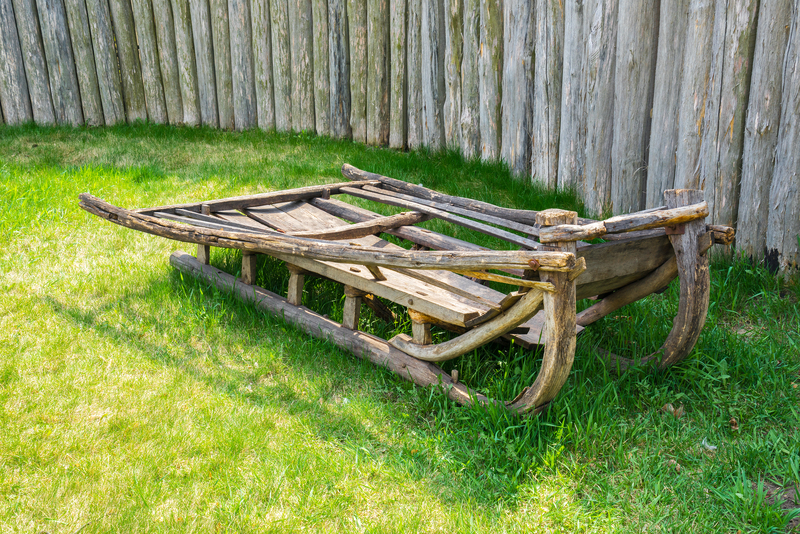Boost Sofa Durability: Best Practices in Storage
Posted on 17/05/2025
Boost Sofa Durability: Best Practices in Storage
Sofas are central to any living room's comfort and style, yet they are a significant investment many hope to keep in top shape for years. Whether you're renovating, moving, or simply decluttering, knowing how to store your sofa properly is crucial. In this comprehensive guide, we'll explore the best practices to boost sofa durability through optimal storage techniques.

Why Proper Sofa Storage Matters
Storing a sofa is not as straightforward as it might seem. Exposure to dust, humidity, pests, and improper handling can lead to early deterioration. Proper sofa storage preserves the upholstery, maintains the frame's integrity, and ensures your furniture is ready for use when needed.
- Prevents Mold & Mildew: Proper storage keeps your sofa dry and free from mold growth.
- Avoids Frame Warping: Incorrect positioning can warp frames made of wood or metal over time.
- Maintains Upholstery Quality: Minimize fading, staining, and pest infestations.
- Saves Money: Maximizes the lifespan, reducing frequent replacement costs.
Preparing Your Sofa for Storage
1. Clean Thoroughly
Before storing your sofa, ensure it's impeccably clean. Dirt and food particles can cause stains, odors, or attract pests. Follow the manufacturer's cleaning instructions, whether your sofa is leather, fabric, or synthetic.
- Vacuum all surfaces, including under cushions.
- Use suitable cleaning products (e.g., leather conditioner for leather, upholstery cleaner for fabric).
- Allow the sofa to dry completely before storage to prevent moisture buildup.
2. Disassemble When Possible
If your sofa can be separated into parts, do so. This reduces stress on the frame and cushions during storage and transportation.
- Remove arms and legs if designed for detachment.
- Keep screws and hardware in labeled bags for easy reassembly.
- Document the disassembly process with photos for future reference.
3. Protect With Covers
Using the right covers is crucial when it comes to boosting sofa longevity in storage.
- Opt for breathable covers: Cotton or specialized furniture covers prevent condensation, unlike plastic which traps moisture.
- Do not wrap tightly; allow air circulation to prevent mold growth.
- Seal up only after you're sure the sofa is fully dry.
Choosing the Perfect Storage Environment
1. Indoor vs. Outdoor Storage
Where you store your sofa plays a huge role in determining its longevity.
- Indoor storage is ideal. Climate-controlled units protect against temperature fluctuations, humidity, and pests.
- Outdoor sheds or garages are riskier, often lacking adequate protection against moisture and extreme temperatures, which can cause damage.
2. Climate-Controlled Storage Units
The best way to enhance sofa durability during storage is to choose a climate-controlled unit to maintain consistent temperature and humidity.
- Prevents fabric deterioration and leather cracking.
- Deters rodents and insects who thrive in fluctuating, moist environments.
- Reduces the likelihood of musty odors developing.
3. Elevate and Isolate
Never place the sofa directly on the floor. Use pallets or blocks to elevate it, further protecting it from potential flooding or spills.
- Improves air circulation.
- Prevents contact with dampness.
Best Practices for Storing Sofas
1. Position Carefully
Proper placement is crucial to keep the structure intact. Avoid stacking heavy items on your sofa during storage. Excess weight can permanently indent cushions or warp the frame.
- Place the sofa upright, as you would in the living room.
- If disassembled, store cushions and legs separately, ensuring nothing crushes or warps them.
2. Control Humidity Levels
Moisture is the enemy of both wood and upholstery. Use desiccant containers, dehumidifiers, or moisture absorbers in your storage area--especially in regions with high humidity.
3. Regular Inspection
Overlooked issues escalate quickly in storage. Make occasional visits to your storage area to check for:
- Signs of pests or rodents
- Mold or mildew
- Condensation or water leaks
Prompt attention to any issues will dramatically enhance sofa lifespan.
Special Tips for Different Sofa Materials
Leather Sofas
Leather upholstery, while luxurious, can crack or dry if not properly handled.
- Apply leather conditioner before storage to retain suppleness.
- Avoid plastic wraps--opt for breathable, soft covers.
Fabric Sofas
Fabric sofas absorb odors, dust, and moisture more readily.
- Steam-clean fabric areas and let them dry thoroughly.
- Consider using fragrance sachets or odor absorbers inside the cover.
Wooden Frames
Excess moisture can warp wooden frames and cause joints to loosen.
- Treat with wood polish or wax before storing.
- Inspect for signs of wood-boring insects before storage.
Protecting Sofas from Pests and Rodents
1. Clean the Storage Area
Ensure the storage unit/shed is free from food crumbs or organic debris that attract pests.
- Vacuum and sweep the area before moving your sofa in.
- Seal cracks and holes to block entry points for rodents and insects.
2. Use Repellents
Place natural pest repellents like cedar chips, lavender sachets, or silica gel packs with your sofa. Avoid harsh chemicals which may damage upholstery.
How Long Can You Store a Sofa?
Properly prepped and protected, most sofas can last 6 months to several years in storage. However, routine checks are essential; poorly ventilated or high-moisture environments reduce sofa storage lifespan significantly.
Common Mistakes To Avoid
- Storing a damp sofa: Never store a sofa that's not fully dry.
- Using tight plastic wrap: Traps moisture, causing mildew and odors.
- Placing sofas flat on cold floors: Exposes them to condensation and potential insect damage.
- Stacking heavy objects: Permanently ruins the cushion structure and upholstery.

FAQs: Sofa Durability & Storage
How do I know if a sofa is ready for storage?
Make sure the sofa is clean, dry, and covered with a breathable protector. Check that all disassembled parts are accounted for and safely stored.
Is it okay to store sofas in plastic wrap?
Avoid tight plastic wrap for long-term storage. If you must use plastic, leave it loose above a breathable fabric layer to avoid trapping moisture.
Can I keep my sofa in a garage?
Only if the garage is clean, dry, pest-free, and doesn't experience big temperature shifts. Otherwise, consider renting a climate-controlled unit.
How often should I check on my stored sofa?
Inspect at least every 2-3 months for signs of moisture, pests, or damage.
Conclusion: Maximizing Sofa Storage Lifespan
Boosting your sofa's durability during storage relies on foresight and care. Proper cleaning, thoughtful disassembly, protection with breathable covers, and a controlled, elevated environment are critical steps for ensuring your sofa emerges just as comfortable and attractive as when it was first stored.
By following the comprehensive sofa storage tips and best practices outlined above, you preserve not only the functionality and value of your furniture but also add years to its lifespan. Invest a little time and effort, and your sofa will reward you with comfort and style for many years to come.








